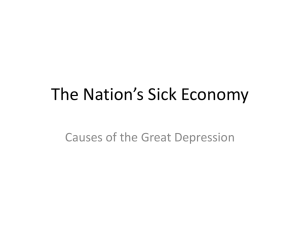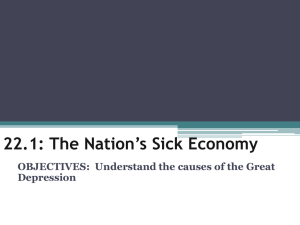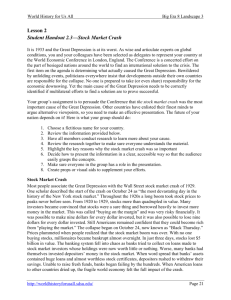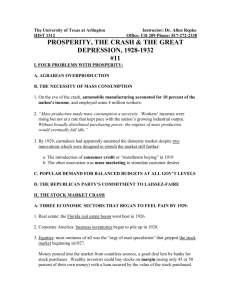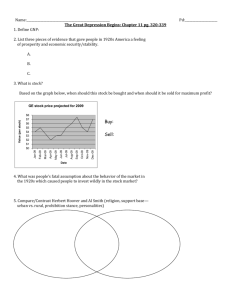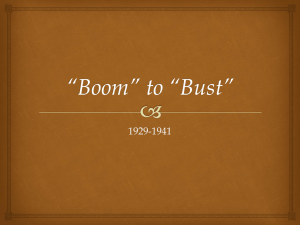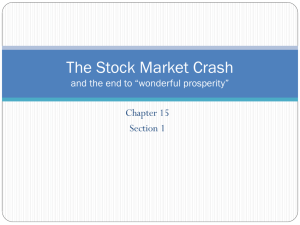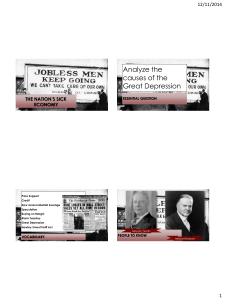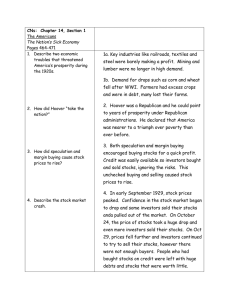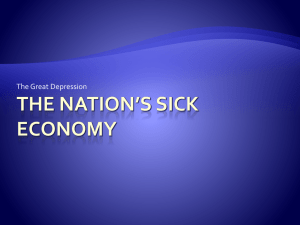Name Date ______ Student # ______
advertisement
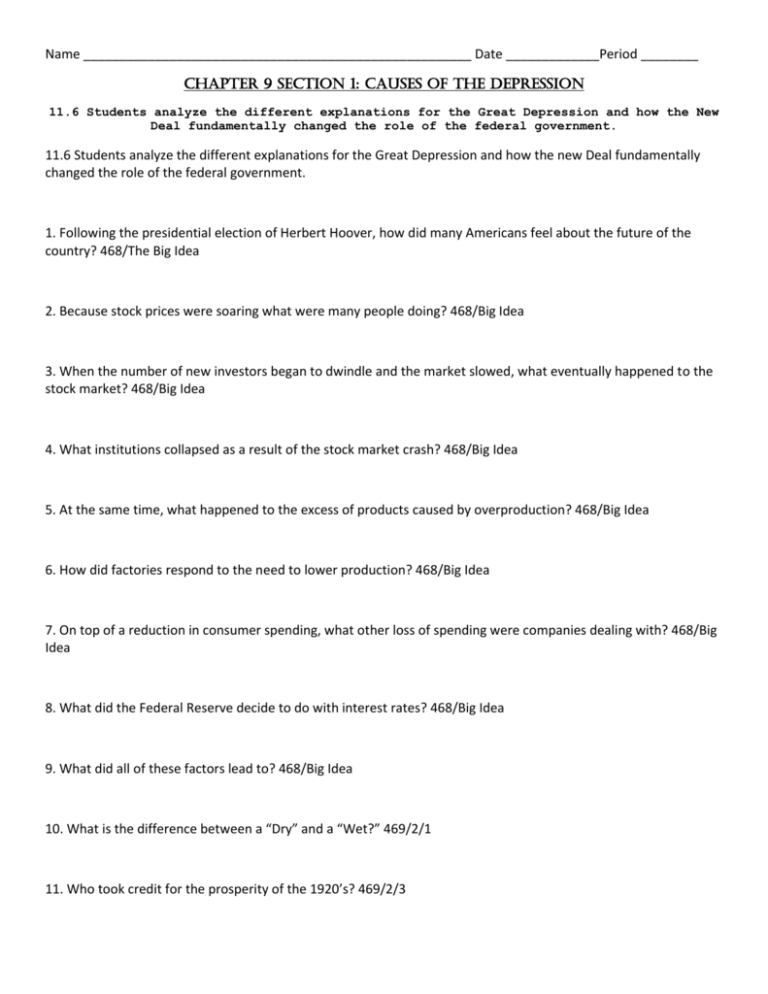
Name ______________________________________________________ Date _____________Period ________ Chapter 9 Section 1: Causes of the Depression 11.6 Students analyze the different explanations for the Great Depression and how the New Deal fundamentally changed the role of the federal government. 11.6 Students analyze the different explanations for the Great Depression and how the new Deal fundamentally changed the role of the federal government. 1. Following the presidential election of Herbert Hoover, how did many Americans feel about the future of the country? 468/The Big Idea 2. Because stock prices were soaring what were many people doing? 468/Big Idea 3. When the number of new investors began to dwindle and the market slowed, what eventually happened to the stock market? 468/Big Idea 4. What institutions collapsed as a result of the stock market crash? 468/Big Idea 5. At the same time, what happened to the excess of products caused by overproduction? 468/Big Idea 6. How did factories respond to the need to lower production? 468/Big Idea 7. On top of a reduction in consumer spending, what other loss of spending were companies dealing with? 468/Big Idea 8. What did the Federal Reserve decide to do with interest rates? 468/Big Idea 9. What did all of these factors lead to? 468/Big Idea 10. What is the difference between a “Dry” and a “Wet?” 469/2/1 11. Who took credit for the prosperity of the 1920’s? 469/2/3 12. What slogan did republican candidates use to promise continued prosperity? 469/2/3 13. What did Hoover say during his inauguration speech and how is this ironic? 469/2/4 14. What is the stock market? 470/1/1 15. What is a bull market? 470/1/1 16. In the 1920s what convinced many Americans to invest heavily in the stocks? 470/1/1 17. Describe buying stocks on margin? 470/2/1 18. What it is called when a person borrows money from a stockbroker to buy stocks? 470/2/1 19. What is speculation? 471/1/1 20. How did “buying on margin” and “speculation” create false prosperity? 21. What was the market running out of buy the end of 1929? 471/1/2 22. When professional investors sensed danger and began to sell what happened to prices, and what did other investors then do? 271/1/2 23. Brokers made margin calls asking investors to pay back their loans which made frightened customers do what? 471/1/3&4 24. What is the date of “Black Tuesday?” 471/2/1 25. What is “Black Tuesday?” 471/2/1 26/27. Copy the Great Depression charts on page 470. Copy the “Causes” and the “Cyclical Effect. ” 28. How did the stock market crash affect people who were not directly involved in investing? 29. In what two ways were banks severely hurt by the stock market crash? 472/1/1&2 30. When banks lost money and were only able to offer people and businesses smaller loans, what did it help to do to the economy? 472/1/2 31. What were many banks forced to do when they couldn’t make up for the losses of the stock market crash? 472/1/3 32. When a bank closed what happened to customers’ savings? 472/1/3 33. How did bank failures make people feel about the banking system? 472/2/top 34. What is a bank run and why do they happen? 472/2/1 35. During the first 2 years of the Depression what percent of banks closed? 472/2/2 36. The stock market crash helped put the economy in recession but what would not have happened if it weren’t for other forces at work? 472/2/3 37. What was one of the key causes of the Depression? 472/2/4 38. What did low consumption (consumer spending) lead manufacturers to do? 473/1/1 39. Describe the chain reaction that put many Americans out of work. 473/1/2 or use the chart you copied from page 470. 40. What could America have done that might have saved American jobs? 473/1/3 41. What did the Hawley-Smoot Tariff aim to do and what did do instead? 473/2/top 42. What institution made a mistake by keeping interest rates very low instead of raising interest rates to curb excessive speculation? 473/2/1 43. When the Depression hit, how did the Federal Reserve make another mistake? 473/2/2
